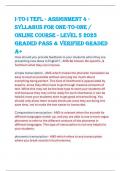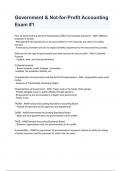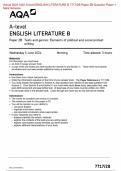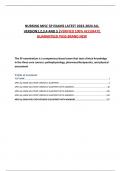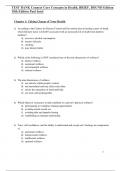Exam (elaborations)
i-to-i TEFL - Assignment 4 - Syllabus for one-to-one / online course - Level 5 2023 GRADED PASS & VERIFIED GRADED A+
- Course
- Institution
i-to-i TEFL - Assignment 4 - Syllabus for one-to-one / online course - Level 5 2023 GRADED PASS & VERIFIED GRADED A+ How should you provide feedback to your students when they are presenting new ideas in English? - ANS-Be honest, Be specific, & Tell them what they can improve simple ...
[Show more]
